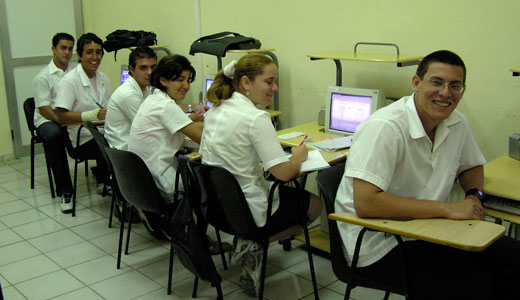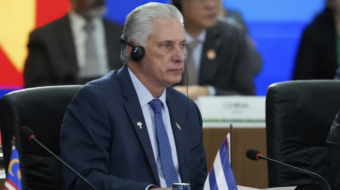
Part one of a two-article series. See part two here.
What’s Cuba got that we don’t? A good universal health care system.
Despite the valiant attempt of the Affordable Care Act passed in March 2009 and signed into law by President Obama to fix health care, about 50 million Americans remain uninsured, and another 25 million remain under-insured, trapped in limited-benefit and high-deductible health plans.
There are also 26.5 million Americans with heart disease. There’s an autism epidemic that affects 1 in 100 children being born. For many parents the treatments they need for their children aren’t even covered by insurance. The poor cannot afford health care so they end up waiting until they are so sick they wind up in the emergency room driving up waits and costs for everyone through no fault of their own.
Rates of lack of insurance amongst Latinos, African Americans, Native Americans and other minorities are appalling. Most progressive Democrats agree the Affordable Care Act does not go far enough in ending the nation’s health care woes.
So how can we fix this mess while putting the bogus insurance industry out of business and curbing bloated pharmaceutical industries? The simple answer is a universal health care system that works. Many opponents of a universal system point to supposed government waste and abuse along with a massive health bureaucracy. There’s a way to avoid that.
I look to Cuba as a model for us to follow.
A recent conversation with an American medical student studying at Cuba’s renowned Latin American School of Medicine provided me with some key facts.
The basic health care system in Cuba, she said, starts at small neighborhood clinics staffed by a trained nurse and a doctor. The doctor or nurse in charge of the station typically lives above the clinic in a small apartment so they are available even when the clinic is closed. This doctor is a primary care family doctor who serves as the health care frontline. He or she handles all basic health care such as checkups, immunizations, and health questions.
For situations requiring a specialist or medical tests the next stop is the polyclinic. The polyclinic is basically a centralized medical office where specialists are located and diagnostic tests are carried out. Cuba has more than 400 polyclinics around the island. Things such as X-rays, ultrasounds, dentistry, and other health specialties are handled at the polyclinic.
At the polyclinic emergencies can be handled that do not require overnight stays. So fractures, sprains, and other urgent care situations can be treated there. This removes the need for everyone to show up at a hospital emergency room at the slightest sign of trouble.
Hospitals in Cuba are truly for treatment of life-threatening emergencies and conditions. They come in all shapes and sizes. Ambulances can transport patients who are too ill to move themselves to either a Polyclinic or hospital depending on the emergency.
The best part of Cuban medicine in my opinion is that alternative or complimentary medicine is part of the free universal health care the government provides. Alternative treatments like acupuncture have come to the island. It it’s not limited to a select few patients. Alternative medicine is used at all three levels of care! Doctors and nurses along with alternative treatment providers such as acupuncturists work with their patients and each other to coordinate care successfully.
It’s amazing. Even with the discriminatory U.S. economic embargo against them, Cubans have built a modern medical system in which every citizen is able to have quality care at no cost to themselves. Something Americans lack.
How could a Cuban-style health care system work here in the United States? See part two of this series.
Photo: Medical students in Cuba. Roberta Wood/PW










